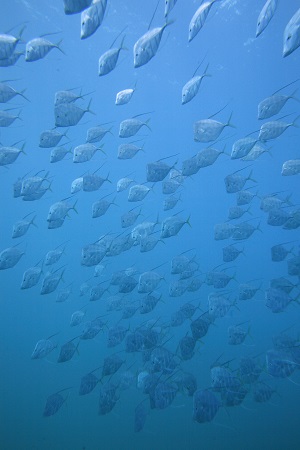410116-fish cloaks.JPG

The lookdown fish can blend in with the background of polarized light. Credit: Dr. Molly E. Cummings, University of Texas at Austin
Hiding in plain sight isn’t easy. That’s especially true if you’re a fish swimming through the open ocean. There are no coral reefs to hide behind, no kelp beds to provide concealment. So to stay alive, a fish has to find a way to camouflage itself from both predators and prey.
Some do it with different colors. They might be dark on top and light on the bottom, to blend in with the background as seen from above and below. Others can change colors or reflect sunlight.
And a recent study found that some are especially well adapted to blend in with the background of polarized light — light waves that are aligned in a particular direction. Polarization changes with different viewing angles and with the angle of the Sun, so blending into that background requires something like Harry Potter’s cloak of invisibility.
Researchers at the University of Texas at Austin and elsewhere found that some open-ocean species of fish seem to produce such cloaks. The researchers used cameras sensitive to polarized light to see how certain fish blended into the background as seen from different viewing angles and at different Sun angles. They compared those observations to those made of similar species that live close to shore.
They found that the fish in the open ocean were much better at hiding — there was less contrast between the fish and the watery background. In the lab, they found that structures in the fish’s skin acted as good reflectors of polarized light — an adaptation that helps the fish hide in plain sight.

